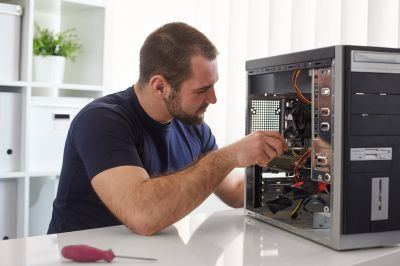Optimal Timing for Windows Installations
Windows installations are a critical component of maintaining optimal computer performance. Choosing the right time for installation can minimize disruptions and ensure compatibility with other system updates. Proper timing also helps prevent data loss and reduces downtime during the process.
Spring and fall are generally ideal for Windows installations due to moderate temperatures and fewer system updates, reducing the risk of conflicts.
Early mornings or late evenings are recommended to avoid workday interruptions and allow sufficient time for installation and setup.
Scheduling during off-peak hours minimizes impact on productivity, especially for business environments.
Timing installations around scheduled Windows updates can prevent compatibility issues and ensure smoother transitions.

Technicians preparing a computer for Windows installation.

Backing up data before starting Windows installation.

Technician performing the Windows setup on a desktop.

Configuring system preferences after Windows installation.

Training users on new Windows features and functionalities.

Optimizing Windows settings for performance.

Resolving issues during or after installation.

Ongoing support for Windows systems.

Custom configurations for specialized needs.
| Timing Consideration | Benefit |
|---|---|
| Spring and Fall | Moderate temperatures and fewer system conflicts |
| Early mornings or late evenings | Minimized work disruption and ample setup time |
| Off-peak business hours | Reduced impact on productivity and service availability |
| Before scheduled Windows updates | Better compatibility and smoother installation |
| Prior to system upgrades | Ensures readiness for new features |

Technician upgrading a Windows system.

User preparing data backups before Windows setup.

Configuring Windows settings after installation.

Support technician assisting with Windows setup.
Interested in scheduling a Windows installation? Filling out the contact form provides an opportunity to discuss options and find the most suitable timing for specific needs. Proper timing and preparation can lead to smoother transitions and enhanced system performance.






